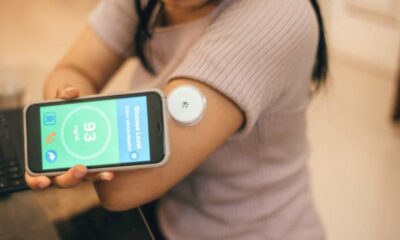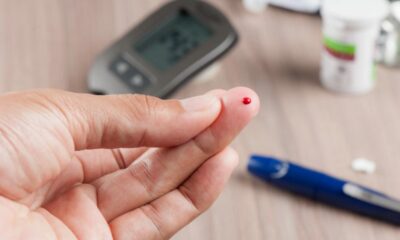Managing diabetes involves a multifaceted approach, where exercise plays a pivotal role alongside medication and diet. Regular physical activity helps in improving insulin sensitivity, controlling blood sugar levels, and promoting overall health. This article delves into effective workouts for diabetics, offering insights on how various exercises can help manage blood sugar and improve quality of life.
Understanding Diabetes and the Role of Exercise
Diabetes is a chronic condition characterized by high blood sugar levels due to the body’s inability to produce or effectively use insulin. The primary types of diabetes are Type 1, Type 2, and gestational diabetes. Exercise is crucial for diabetics as it helps:
- Improve insulin sensitivity
- Lower blood sugar levels
- Aid in weight management
- Enhance cardiovascular health
- Boost mental well-being
Preparing for Exercise
Before starting any exercise regimen, it is essential for diabetics to consult with healthcare providers. This ensures that the chosen activities are safe and appropriate for their condition. Here are some preparatory steps:
- Medical Consultation: Get clearance from your doctor, especially if you have any diabetes-related complications.
- Understand Your Fitness Level: Start with low to moderate intensity if you’re new to exercise.
- Blood Sugar Monitoring: Check your blood sugar levels before and after exercise to understand how your body responds.
- Hydration and Nutrition: Stay hydrated and consider having a small snack if your blood sugar levels are low before exercising.
Effective Workouts for Managing Blood Sugar
- Aerobic Exercises
Aerobic exercises, also known as cardio, are excellent for improving cardiovascular health and controlling blood sugar levels. They involve rhythmic and continuous movement, which helps increase heart rate and burn calories.
- Walking: A simple and effective exercise that can be done anywhere. Aim for at least 30 minutes of brisk walking five days a week.
- Cycling: Whether on a stationary bike or outdoors, cycling helps improve insulin sensitivity and cardiovascular health.
- Swimming: A low-impact exercise that is gentle on the joints and effective in controlling blood sugar levels.
- Running or Jogging: These activities are great for those who are physically fit and want to challenge their endurance and stamina.
- Strength Training
Strength training involves using resistance to build muscle mass, which in turn helps in better glucose uptake by the muscles.
- Weight Lifting: Use free weights, machines, or resistance bands to perform exercises like squats, deadlifts, and bench presses.
- Bodyweight Exercises: Push-ups, pull-ups, and planks are effective for building strength without any equipment.
- Circuit Training: Combines strength and aerobic exercises for a comprehensive workout that boosts metabolism and controls blood sugar.
- Flexibility and Balance Exercises
These exercises help in maintaining joint health, preventing injuries, and improving overall mobility.
- Yoga: Enhances flexibility, strength, and relaxation, contributing to better blood sugar control.
- Pilates: Focuses on core strength, flexibility, and overall body conditioning.
- Tai Chi: A form of martial arts that involves slow, controlled movements and deep breathing, helping in stress reduction and blood sugar management.
- High-Intensity Interval Training (HIIT)
HIIT involves short bursts of intense exercise followed by rest or low-intensity periods. It is highly effective for improving cardiovascular health and insulin sensitivity.
- Example HIIT Workout: 30 seconds of sprinting followed by 1 minute of walking, repeated for 20-30 minutes.
- Benefits of HIIT: Increases calorie burn, improves fitness levels, and enhances blood sugar control more effectively than moderate-intensity continuous training.
- Daily Activity and Lifestyle Changes
Incorporating more physical activity into daily routines can significantly impact blood sugar levels.
- Active Commuting: Walk or bike to work instead of driving.
- Household Chores: Activities like gardening, cleaning, and washing the car count as physical exercise.
- Taking the Stairs: Opt for stairs over elevators whenever possible.
Monitoring and Adjusting Exercise Routines
Regular monitoring of blood sugar levels before, during, and after exercise is crucial for diabetics. This helps in understanding how different activities affect blood sugar and allows for necessary adjustments. Here are some tips:
- Keep a Log: Record your workouts, blood sugar levels, and any symptoms to identify patterns and make informed adjustments.
- Hypoglycemia Awareness: Be aware of signs of low blood sugar (dizziness, sweating, confusion) and carry fast-acting carbohydrates like glucose tablets or fruit juice.
- Adjust Insulin and Medication: Consult your doctor about adjusting insulin or medication doses based on your exercise routine.
Conclusion
Exercise is a powerful tool for managing diabetes and improving overall health. By incorporating a mix of aerobic, strength, flexibility, and HIIT exercises, diabetics can achieve better blood sugar control, enhanced fitness, and a higher quality of life. Remember to consult healthcare providers, monitor blood sugar levels, and make gradual adjustments to find the most effective workout routine for your needs.

 Diabetology2 weeks ago
Diabetology2 weeks ago
 Diabetology1 week ago
Diabetology1 week ago
 Diabetology5 days ago
Diabetology5 days ago
 Diabetology7 days ago
Diabetology7 days ago
 Diabetology7 days ago
Diabetology7 days ago
 Diabetology3 days ago
Diabetology3 days ago
 Diabetology3 days ago
Diabetology3 days ago
 Diabetology1 day ago
Diabetology1 day ago
















